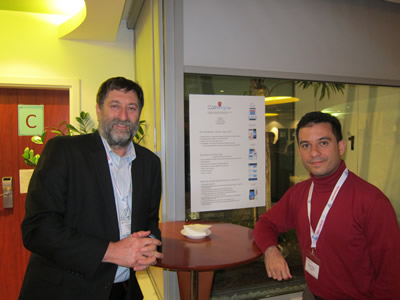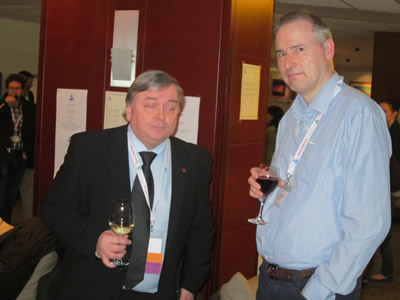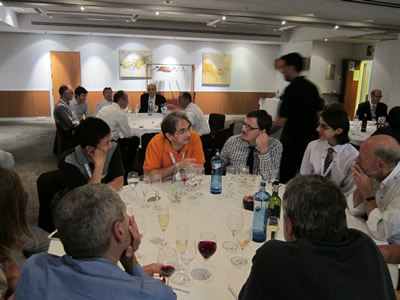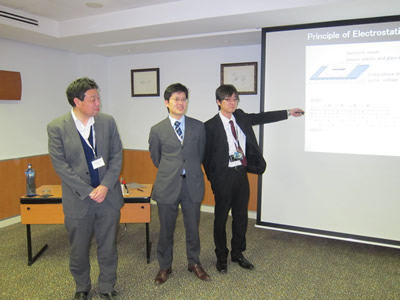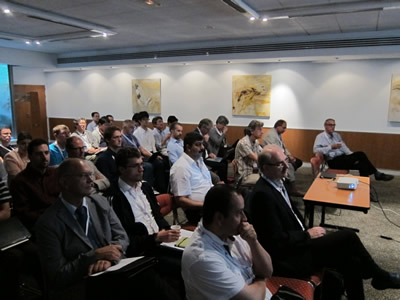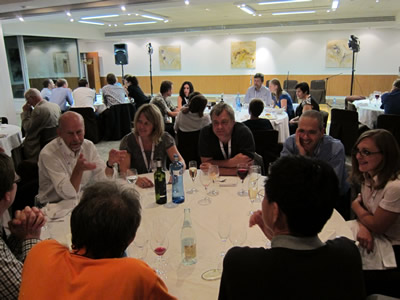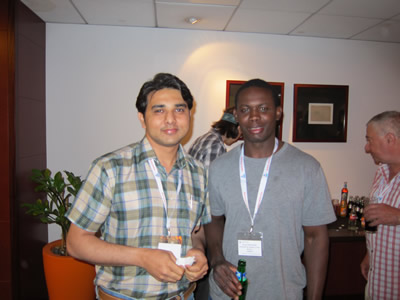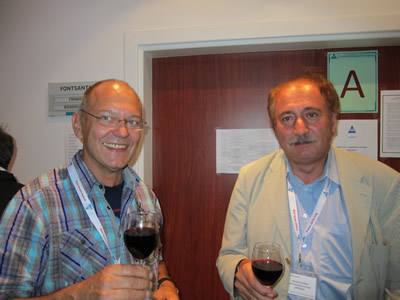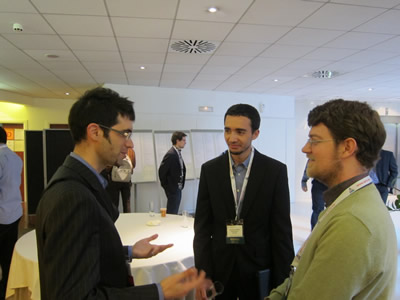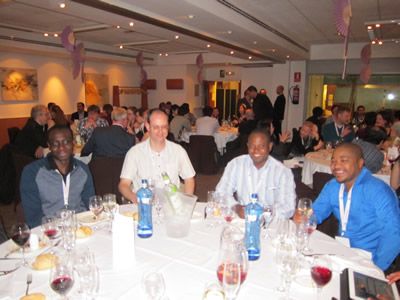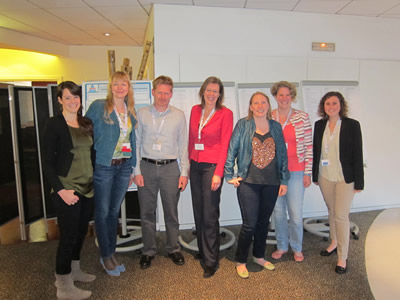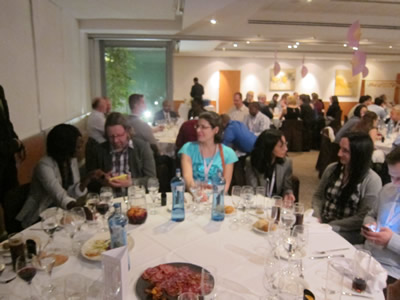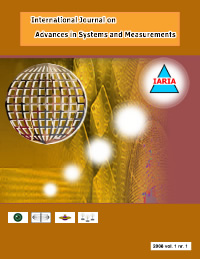INFOCOMP 2018 - The Eighth International Conference on Advanced Communications and Computation
July 22, 2018 - July 26, 2018
INFOCOMP 2018
ISSN: 2308-3484
ISBN: 978-1-61208-655-2
INFOCOMP 2018 is colocated with the following events as part of DataSys 2018 Congress:
- AICT 2018, The Fourteenth Advanced International Conference on Telecommunications
- ICIW 2018, The Thirteenth International Conference on Internet and Web Applications and Services
- ICIMP 2018, The Thirteenth International Conference on Internet Monitoring and Protection
- SMART 2018, The Seventh International Conference on Smart Cities, Systems, Devices and Technologies
- IMMM 2018, The Eighth International Conference on Advances in Information Mining and Management
- INFOCOMP 2018, The Eighth International Conference on Advanced Communications and Computation
- MODOPT 2018, The International Symposium on Modeling and Optimization
- MOBILITY 2018, The Eighth International Conference on Mobile Services, Resources, and Users
- SPWID 2018, The Fourth International Conference on Smart Portable, Wearable, Implantable and Disability-oriented Devices and Systems
- ACCSE 2018, The Third International Conference on Advances in Computation, Communications and Services
INFOCOMP 2018 conference tracks:
Trends and advances on architecture/methods
Intensive computing and Big Data; Performance portability; Trading off locality and load balancing; Complex multi-physics models; Multiscale methods;Emerging programming models;Hybrid parallel programming; APGAS (Asynchronous Partitioned Global Address Space) programming model; Resiliency and elasticity approaches; Scalable petascale data-driven approach; Extreme scale technologies; Task characterization-driven scheduling; Data analytics and visualization; HPC in IoT (Internet of Things) systems; Observational data and simulations; Complex scientific data sets; Massively scalable task parallelism; Routing-aware tasks; Multi-tenant cloud workloads; Soft error resiliency
Trends and advances on disciplines/applications
Urban Simulations; Scalable cortical computing; Molecular dynamics supercomputing; Petascale biomolecular simulations; Data-centric parallel systems; Lithospheric dynamics; Graph computation; Genome-scale gene networks; Scale free graphs; Migratable objects; Quantum simulations; Metascalable quantum molecular dynamics simulations; Real-time data analytics; Uncertain execution scales; Sharing in IaaS clouds; Large-scale visualization; Distributed NoSQL data stores
Large scale and fast computation
Developments in information and computing systems;
Grid computing;
Cloud computing;
Pervasive / ubiquitous computing;
Services computing and Opportunistic computing;
High Performance Computing (HPC);
Fast data processing;
Real-time processing;
Fast switching and routing protocols;
Parallelization of algorithms and applications;
Energy-efficient High Performance Computing;
Large scale data visualization;
Tools for parallelization;
High performance codes;
Optimization;
Innovative architectures;
Distributed systems, dynamical systems;
Future architectures, integrated systems, beyond cloud, reaching exaflop;
Supercomputing architectures, operation, and management; Petascale, Exascale;
Big data, dCache;
HPC centers, data centers;
Benchmarking;
Green500, Graph500, Top500;
Service provisioning;
Green computing, cooling techniques
Programming models
Programming languages and parallel algorithms;
Message Passing Interface (MPI), OpenMP;
Massively Parallel Processing, Symmetric Multi-Processing;
PGAS, GASPI, CAF (Co-array Fortran), UPC (Unified Parallel C);
X10, Chapel, CUDA, OpenCL, OpenACC, OpenHMPP, Lime, OmpSs, OpenStream;
Parallel Virtual Machine (PVM);
Programming paradigms;
Manycore, multicore;
CPU, GPU, FPGA, accelerators;
Chip design, architectures, and programming;
Fault tolerance, troubleshooting, debugging;
High end issues, latency, concurrency
Networks/systems communications
Cross-layer design and optimization;
Cyber-physical systems and networks;
Data centers, virtualization, and cloud networks;
Delay/disruption tolerant networks;
Future Internet broadband services;
Software Defined Networks (SDN);
Fast networks / InfiniBand architectures for future interactive multicore applications;
Sensor networks and embedded systems;
Ad hoc mobile networks;
Access technologies;
P2P networks;
Optical networks;
Cellular and broadband wireless networks; Mobility models and mobile networks;
Multicast, broadcast and anycast;
Multimedia protocols and networking;
Software defined radio and cognitive radio networking;
Content-based network service;
Certification, public key infrastructures, data integrity;
Privacy and anonymity
Networks/systems measurement, control and management
Networks/systems measurement, simulation and emulation;
Network-, system-, and application-management;
Congestion control and capacity planning;
Dynamic spectrum management; Addressing and location management;
Quality of Service (QoS) and Quality of Experience (QoE);
Quality of Data (QoD) and Quality of Context (QoC);
e-Commerce, accounting, pricing and billing;
Highly parallel file systems, Lustre, GPFS;
Interconnects, high speed ethernet;
Use of distributed compute and storage resources;
Energy-aware mechanisms for control and management; Configuration, reuse of software components;
Resource allocation and management;
Denial of service mitigation and prevention;
System and data security; Communication visualization
Turbulence modeling and simulation
Fundamental turbulence; Complex flows; Turbulence modeling; Environmental turbulence; Simulation of solid-liquid systems; Heat/cooling transfer modeling; Transitional flows models; Flows simulation; Particle simulations; Turbulent multi-phase flows; Oscillations; Stability and instability; Turbulent air-water flows; Liquid/Liquid interface turbulence; Aeroacoustics
Advanced applications
Computation
Advanced applications, scientific, theoretical, methodological, practical, and technical contributions; Advanced scientific computing; Simulation and modeling (scientific applications, engineering, industry); Mathematical and numerical algorithms and methods; Molecular dynamics simulation; Genetic algorithms; Physics and chemistry applications; Multi-dimensional data visualization; Search engines and scientific discovery; Scientific data processing; Database applications and development; Knowledge discovery, documentation, and classification; Data intensive computing, data science; Methodology and case studies regarding computing and communication scenarios; Small and Medium Enterprises (SME) applications; Computer Aided Engineering (CAE) applications
Systems
Computer science and geoinformatics; e-Energy, geosciences, prospection, exploration, oil and gas; Information and database systems; Mobility and logistic services; Geoscientific Information Systems (GIS); Remote sensing and satellite imaging; Cartography, hydrology; Climatology and environmental sciences; Medicine, genetics, epidemiology, medical geology;
Online social networking; Vehicular, underground and underwater networks and applications; Education, e-Learning, and e-Science; ICT business evaluation and management; Earth and planetary sciences; Archaeology, cultural heritage; Computation frameworks and tools; Mathematica, SAGE, Maple, Matlab, Scilab, Gromacs, ANSYS, Fluent, etc.)
Legal context, economic use and re-use
Legal informatics; Science, information technology, and copyright; Open access, license models, legal aspects of open source; Legal aspects of collaborative software development; Ownership and information technology; Digital rights; Patents; Toll access;
Accounting; billing; National and international legal regulations
Evaluation context
Energy-aware and energy-efficient networks;
Implementation and experimental testbeds;
Traffic measurement and traffic patterns;
Characterization of topology dynamics;
Access and biometric technologies, performance, and cost prediction;
Web services and performance;
Performance measurement and benchmarking;
Energy-aware and energy-efficient High Performance Computing;
Usability studies;
Social and ethic consequences with biometry and data security;
Standards, benchmarks, protocols
Biometry, security, access technologies, algorithms, and applications
Technologies and advances in biometric algorithms and interfaces (gait, electrocardiography, iris, image, fingerprint, palm veins, multi-modality);
Biometric systems;
Integration of biometrics with other technologies;
Challenge response;
Simplified enrollment;
NFC support, spoofing, and countermeasures;
Single sign on (SSO);
Adaptive trust;
Template protection (protection of reference data);
Large and scalable biometric systems using cloud services;
Deployed solutions and applications;
Experience reports and systems;
Description in physical and logical access control; information system access, immigration and border control, law enforcement, entertainment, finance, life science, healthcare, forensics);
Distributed and mobile devices;
Public Key Infrastructures;
Digital Forensics; Quantum cryptography theory and application for commercial usage; topology of information (braid group approach)
Deadlines:
Submission | Apr 10, 2018 |
Notification | May 13, 2018 |
Registration | May 26, 2018 |
Camera ready | Jun 08, 2018 |
Deadlines differ for special tracks. Please consult the conference home page for special tracks Call for Papers (if any).
